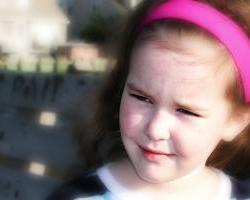There are many different forms of anxiety disorder, including Generalized Anxiety Disorder (GAD), Obsessive-Compulsive Disorder (OCD), Panic Disorder, PTSD, and Social Anxiety Disorder.
According to the Anxiety and Depression Association of America (ADAA), one in eight children will be affected by an anxiety disorder.
Symptoms for each type of anxiety disorder share many commonalities but differ in distinct ways. Here are the official disorder symptoms according to the DSM IV.
Generalized Anxiety Disorder (GAD)
This manifestation of anxiety is characterized but apprehensive expectation, or excessive anxiety and worry. The child’s anxiety need to be associated with 3 or more of the following 6 symptoms to be considered GAD. The symptoms must also be present for more than 1/2 the days in the past 6 months.
- restlessness
- fatigue
- concentration difficulty
- irritability
- muscle tension
- difficulty sleeping
The anxiety and worry a child feels must also be significantly impairing in social or other types of situations. The source of the anxiety must not be due to the direct effects of a substance.
Panic Disorder
Panic Disorder is diagnosed in those who encounter spontaneous feelings of panic and fear the return of that anxiety. Here are the disorder specific symptoms for diagnosis.
- recurrent unexpected panic attacks
- at least one of the attacks has been followed by one month or more of the following:
- persistent concern about having additional attacks
- worrying about the consequences of a panic attack
- significant change in behavior related to the attacks
As with all anxiety disorders, the panic attacks must not be due to the direct effects of a substance.
PTSD
PTSD, or post traumatic stress disorder, is common in children who have experienced traumatic events during their lives. The criteria for diagnosis are:
- the person experienced a traumatic event that involved potential serious injury or death, and the person’s response must have been one of fear, helplessness, or horror
- the event is persistently re-experienced in one of the following ways
- recurrent distressful recollections of the event, including images, thoughts, or perceptions
- recurrent stressful dreams
- acting or feeling as if the traumatic events were recurring
- intense internal or external psychological distress
- physiological reactivity to internal or external cues that symbolize or resemble an aspect of the traumatic event
Social Anxiety Disorder
Although unusual at a young age, children can sometimes develop Social Anxiety Disorder. The disorder consists of an intense fear of social performance. Here are the diagnosis criteria:
- A marked and persistent fear of one or more social or performance situations in which the person is exposed to unfamiliar people or to possible scrutiny by others.
- Exposure to the feared social situation almost always produces anxiety
- The feared social or performance situations are avoided or endured with intense anxiety or distress
- The avoidance or distress interferes with the child’s daily routine
- Must be present for 6 months
- The effects must not be influenced by a substance
Source: ADAA
Photo by RGB Stock Photo user “betacam”




